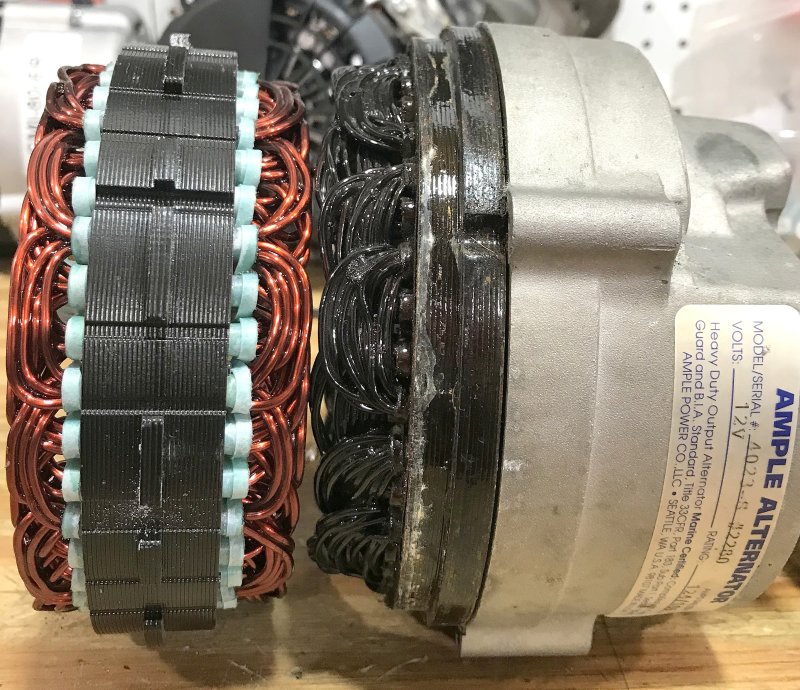I'm talking about alternators, not generators or power stations.Actually they all do.
Some do it directly such as all of the inverter generators like the Honda EU2200i. In the specs they tell you that it is 2200W starting and 1800W continuous. They then translate that through the power equation P=IV to 18.3A @ 120 starting and 15A @ 120 continuous. [I will assume that you will call foul and say this is a different animal but it is not. All inverter generators are a fuel powered engine that uses the rotational mechanical power (hp) of and fuel powered engine to turn and alternator that converts it first to AC electrical power (watts) and then rectifies it to DC electrical power (watts) before running it through an inverter that converts the DC back to AC at a regulated 120v.
Some do it indirectly. For some reason that I cannot understand or guess at, the automotive and marine alternator market has chosen to rate their power output indirectly by the "IV" side of power equation P=IV. They list the power of the power generating device called an alternator as 125A @ 12-volts which when written as a mathematical equations would be 125A x 12v which my calculator tells me is "1500Amp-volts" but per the rules of unit conversion should be simplified to 1500-watts.
BTW when was the last time that you heard of a power generation station such as being rated by their amp capacity. Never seen a mega-Amp rating but see lots of reference to megawatt generators. Electrical power is measured in watts and that cannot change. If you prefer to examine your watts of power based on the number of amps you get at a specific voltage that is fine but it does not change the fact that what we are talking about is watts of power. Personally, when I am looking at solar devices which are always rated in watts, the first thing I do is to find out what that will "do" for me by finding out how many amps I can put into my battery so I divide the watt rating by 13.6v (an average charge current) to get the maximum amps that it will deliver to the battery during charging.
Again, I'd like to see one alternator specification that rates it in terms of maximum power instead of current-RPM-temp. And, I'd like to see that magical, constant power alternator!

